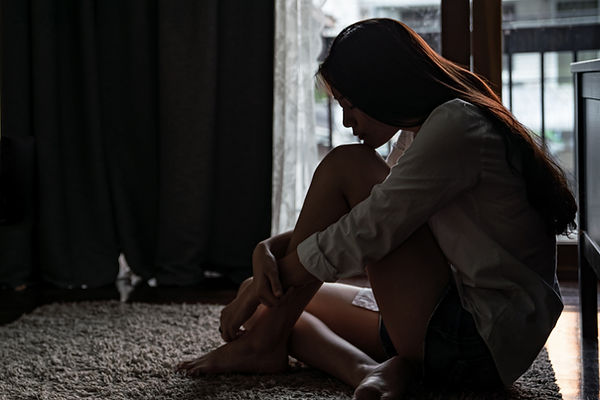What is PTSD?
PTSD is a condition that can develop after someone experiences or witnesses a traumatic event. This could be anything from combat, a serious accident, a natural disaster, or personal assaults. People with PTSD may relive the traumatic event through flashbacks or nightmares and may feel intense distress when reminded of the trauma (National Institute of Mental Health).
Symptoms of PTSD
PTSD symptoms can vary from person to person but often include:
-
Intrusive Memories: Repeated, unwanted memories of the traumatic event.
-
Nightmares: Disturbing dreams related to the trauma.
-
Avoidance: Staying away from places, people, or activities that remind them of the event.
-
Negative Changes in Mood: Feelings of hopelessness, guilt, or anger.
-
Increased Arousal: Feeling jumpy, easily startled, or having trouble sleeping (American Psychological Association).
These symptoms can make it difficult for individuals to go about their daily lives.
Causes of PTSD
PTSD can develop after experiencing or witnessing traumatic events. Some common causes include:
-
Combat Exposure: Military personnel can develop PTSD from experiences in war zones.
-
Assault: Experiencing physical or sexual assault can lead to PTSD.
-
Accidents: Serious car accidents or workplace injuries can trigger PTSD.
-
Natural Disasters: Events like hurricanes or earthquakes can cause trauma (Mayo Clinic).
Understanding the causes can help in finding the right support and treatment.
How to Help Someone with PTSD
If you know someone who may be dealing with PTSD, here are some ways you can help:
-
Listen: Offer a supportive ear without judgment. Let them express their feelings.
-
Encourage Professional Help: Suggest that they talk to a mental health professional.
-
Be Patient: Recovery can take time. Be understanding of their feelings and needs.
-
Avoid Triggers: Help them identify and avoid situations that may remind them of the trauma (National Alliance on Mental Illness).
Your support can play a vital role in their healing process.
How to Deal with PTSD
If you or someone you know is struggling with PTSD, here are some strategies that can help:
-
Talk About It: Sharing experiences with trusted friends, family, or a counselor can be helpful.
-
Practice Self-Care: Engage in activities that promote relaxation and well-being, such as exercise, art, or hobbies.
-
Establish a Routine: Keeping a daily schedule can provide a sense of normalcy and control.
-
Mindfulness and Relaxation Techniques: Practices like meditation, yoga, or deep breathing can help manage stress and anxiety (American Psychological Association).
Remember, it’s important to seek help if you need it.
Difference Between PTSD and Other Anxiety Disorders
While PTSD is a type of anxiety disorder, it has specific features that set it apart. Here are some key differences:
-
Trauma Focus: PTSD is directly related to experiencing or witnessing a traumatic event, while other anxiety disorders may not have a clear traumatic trigger.
-
Re-experiencing Symptoms: People with PTSD often relive the traumatic event through flashbacks or nightmares, which is less common in other anxiety disorders (National Institute of Mental Health).
Understanding these differences can help in recognizing when someone may need specialized help.
How to Talk to Someone About PTSD
If you want to talk to someone about their PTSD, here are some tips:
-
Choose a Safe Space: Find a quiet and comfortable place to talk where they feel secure.
-
Be Supportive: Let them know you care and that you’re there for them.
-
Ask Open-Ended Questions: Encourage them to share by asking questions like, “How have you been feeling since the event?”
-
Avoid Pushing Them: Respect their boundaries. Sometimes, they may not want to talk about it (American Psychological Association).
Your kindness can help them feel less alone.
PTSD Treatment Options
There are many ways to treat PTSD. Some common options include:
-
Therapy: Talking to a psychologist or counselor can help process the trauma and develop coping strategies.
-
Medication: Some individuals may benefit from medications, such as antidepressants, to help manage symptoms.
-
Cognitive Behavioral Therapy (CBT): This type of therapy helps individuals change negative thought patterns related to the trauma (Mayo Clinic).
-
Support Groups: Joining a group where individuals share their experiences can provide understanding and reduce feelings of isolation.
Finding the right treatment can vary for each person, so it’s essential to explore different options.
Signs of PTSD in Children and Teens
PTSD can also affect children and teenagers. Here are some signs to watch for:
-
Changes in Behavior: Increased aggression or withdrawal from social activities.
-
Replaying the Trauma: Acting out the traumatic event in play or discussions.
-
Sleep Problems: Nightmares or trouble falling asleep.
-
Declining School Performance: A drop in grades or lack of interest in school (American Academy of Child & Adolescent Psychiatry).
If you notice these signs in a child or teenager, it may be important to seek professional help.
How to Support Someone with PTSD
Supporting someone with PTSD can be challenging, but it’s essential. Here are some ways to help:
-
Check In Regularly: Send a text or call to see how they’re doing.
-
Encourage Activities: Invite them to engage in calming or enjoyable activities together.
-
Educate Yourself: Learn more about PTSD to better understand their experience.
-
Be There: Sometimes just being present is enough. Let them know they are not alone (National Alliance on Mental Illness).
Your kindness and understanding can make a significant difference in their journey toward recovery.
Conclusion
PTSD is a serious condition that can affect anyone who has experienced trauma, but it is treatable. Understanding its symptoms, causes, and ways to support those affected can help create a more supportive environment for everyone. If you or someone you know is struggling, remember that help is available. Reaching out for support is a brave first step. Whether through therapy, medication, or support from friends and family, there is hope for recovery. We can help.

